2017 Volvo S60 and V60 Polestar Track Test Review

Volvo’s Polestar brand may not be a household name like BMW’s M or Mercedes’ AMG, but that is likely to change in a hurry if they keep building cars like this.
We took some time off from our gruelling office life to visit Montreal’s iCar circuit and push the S60 Polestar sedan and V60 Polestar wagon to their limits and find out if they can measure up to the old guard in this luxury sport compact segment.
The S60 Sedan enters the fray of luxury sports sedans like the BMW M3 and AMG C 63, but the V60 Polestar Wagon is unique in the segment with its long roof and open cargo bay.
The Polestar twins aren’t quite at the same power levels as those usual suspects, but it’s still every bit the family ride meets weekend track weapon, capable of easy loading and family errands in any weather, or taking it to the track on the weekend.
Engine
Sharing the same two-liter, four-cylinder block with the Polestar Cyan race car and pretty much every car in the Volvo lineup, the V60 Polestar is “twin-charged” – it has both a turbocharger and supercharger strapped to it to give it ALL the boost.
Fun Fact: the Polestar Cyan racing outfit is the only team in the World Touring Car Championship using the production block, though in racecar spec the 2.0L Drive-E is tuned to a full 400 hp.
ALSO SEE: Volvo Adds Carbon Components to 2018 S60 and V60 Polestar
In its most sporting street application, it cranks out 362 horsepower at 6000 rpm, and 347 pound-feet of torque from 3,100 to 5,100 rpm, sending power to all four wheels for incredible acceleration.
The acceleration pins you to your seat and gives you those fun g-force butterflies in your stomach when you really rip it. Officially the wagon hits 60 mph in 4.5 seconds (the sedan in 4.4), but it actually feels faster, because there is a bit of throttle and boost lag before it really pours all that power on and that’s when it just explodes. It’s spectacular, especially in a little family wagon.
Get the Flash Player to see this player.
FAST FACTS
| : | 2017 Volvo V60 Polestar |
| Engine: | 2.0L twincharged four-cylinder |
| Power: | 362 hp @ 6,000 rpm; 347 lb-ft @ 3,100 rpm |
| Transmission: | 8-speed automatic |
| Weight: | 3,957 lb (1,795 kg) |
| Acceleration (0-60 mph): | 4.5 seconds |
| Acceleration (0-100 km/h): | 4.8 seconds |
| Fuel Economy (mph): | 20 City, 27 Highway, 23 Combined |
| Fuel Economy (L/100 km): | 11.8 city, 8.5 highway, 10.3 combined |
| US Price: | $62,595 |
| CAN Price: | $71,015 |
| : | (all prices include destination fees) |
Brakes and AWD
Probably even more important for its performance on track than that acceleration are the brakes.
Polestar went with Brembo 6-piston caliper clamping down on ventilated & slotted discs, 14.6 inches in front and 11.6 in back. It’s a ton of stopping power and helps gather in all that momentum, and as the track dried throughout our afternoon, we could shorten our braking zones dramatically and feel the full force of those big Brembos hauling it down from speed and unloading the rear end for a little wiggle.
ALSO SEE: Report: Volvo’s Polestar to Develop 600 HP Coupe
With 20-inch Michelin Pilot Super Sports sticking to the track, that dramatic braking was followed by good bite on turn-in, and the AWD system has been revised for more torque to go to the rear axle more quickly. While it doesn’t entirely eliminate understeer, you can minimize it by trail braking deeper into the corner, and there is enough chassis and steering feedback that it’s a joy to explore on track. Getting back on power, the extra rear bias helps balance the chassis out of corners and that power and torque comes back into play as you rocket out onto the straights.
Transmission
The transmission also has some neat tricks that help it master the track without compromising its daily drivability.
First of all, the new 8-speed automatic is quick, with faster shifts and a couple Sport modes that really transform its behavior. In Auto it’s smooth and aims for efficiency first but Sport mode gear changes are quick enough for your average fun drive, although the shift points aren’t quite aggressive enough for the track, and paddle shifters mean you can take control of the shifting at any time. There’s also a Sport+ mode that is accessed by a convoluted sequence of the shifter and paddle, like a special finishing move in Mortal Kombat.
At a full stop, foot on the brake, shifter in Sport mode to left, push gear lever up (+) and hold, then tap left shift paddle (–) twice, and voila: S+ flashes in the gauge cluster! In Sport+ the transmission never lets the engine drop below 4,000 revs from second gear up, and waits until the very last moment before redline to shift for maximum power at all times. Shift speeds are even faster, and open exhaust valves add an even angrier growl to this already angry four cylinder. However, it’s still just a two-liter four, so the sounds are a bit lame compared a silky straight-six or brawny V8, but the exhaust and boost mix in some new-school sounds to provide an interesting soundtrack.
ALSO SEE: Polestar to be Dedicated Performance Brand for Electric Volvos
The steering doesn’t necessarily have the best feel, but it is very quick, and even on the tight hairpins on the track, I never had to take my hands off the wheel.
Volvo switched to electric power steering for 2017, and while it is heavy, there are far better cars for less money that deliver a more connected, engaging drive, for a lot less money if that’s all you’re looking for.
What very few cars have is that much horsepower in a hatchback with 24 cubic feet of space, and race-bred adjustable dampers.
The Polestar twins have Ohlins dampers that are manually adjustable, with up to 20 settings on each corner. Theoretically, you could adjust the front dampers with the right tool trackside or in your garage, but the rears are harder to access, and realistically, very few owners will tinker with these settings except for experienced track-day drivers. However, if you find the ride too rough for your daily tasks, or hit the track often, it may be worthwhile to visit the dealership to have them dial it in to suit your needs.
In its standard settings, the V60 Polestar is well suited to the track, the spring rate 80 percent stiffer than a regular V60, and 15-percent stiffer stabilizer bars, a carbon-fiber-reinforced front strut bar, along with uprated mounts, bushings and other hardware.
In the Real World
However, we brought home a V60 for a week, and after the track day is a distant memory, the ride is punishing over rough city streets.
I could live with it because I tend to favor that kind of firm suspension personally, but it’s really not a good fit for someone that never plans to take it to the track. A standard V60 T6 AWD still has plenty of power and handling chops for fun roads without the constant pounding over potholes and bumps, and for much less money.
Another thing that gets old fast after the thrill of the track is gone is the interior.
At a glance, it’s appealing, and the materials are nice, especially the amazing leather and Nubuck seats, but the small buttons and style-first layout of the controls make it tedious and distracting to use. At least steering wheel buttons allow you to bypass some of the confusion of the screen controls in the center stack.
ALSO SEE: 2017 Volvo V60 Polestar Review
As mentioned, the trunk offers 24 cubic feet of cargo space, and that goes up to 58 with the rear seats folded. It’s not huge by crossover standards, but it’s far more than your average sport sedan, although back seat space is a bit tight for adults, and the low roof makes it hard to install child seats.
The last sticking point with the V60 Polestar is its price. Starting at over $60,000, it’s creeping right up to M3 and C63 pricing, but with power that is well short of those cult favorites and a chassis that dates back to 2010.
Then again, with a limited production run and only 200 2017 models destined for the States, it has a level of exclusivity normally reserved for supercars, and it looks spectacular in this signature Rebel Blue.
Verdict: 2017 Volvo S60 and V60 Polestar Track Test
Although the ride is rough and interior is a generation behind, the Polestar comes together as a total package – it’s the real deal.
The engine, transmission, chassis and suspension all work beautifully together to make every drive feel special and fun, right up to its limits on the track or your favorite winding road.
Polestar has done an incredible job transforming this family-friendly luxury vehicle into a fast and fun track-day alternative without giving up the basic utility of a four-door wagon.
If you can get your hands on one, it’s the kind of special ride that combines a daily driver with performance credentials and the kind of exclusivity that might one day make it a collector’s car.
LOVE IT
- Small but Mighty Engine
- Approved for Track Use
- Exclusivity and Practicality
LEAVE IT
- Tight back seat
- Dated interior

Jonathan eats, sleeps, and breathes cars. A family man through and through, Jonathan brings over 10 years of experience evaluating cars with a focus on the details that parents will be grateful for, and cars that drivers will appreciate.
More by Jonathan Yarkony



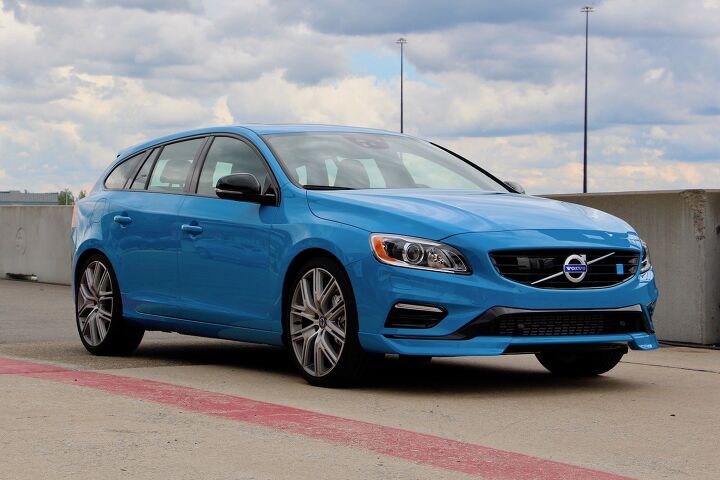







































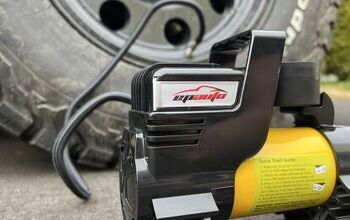

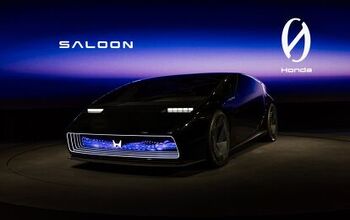

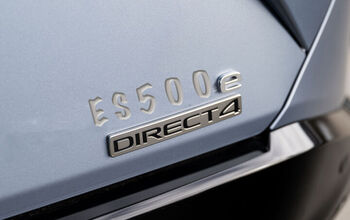




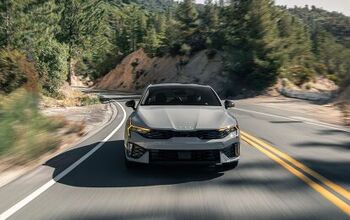



Comments
Join the conversation
Still love it.